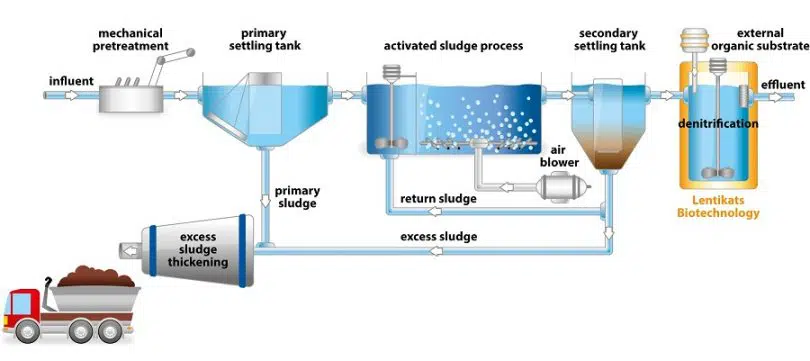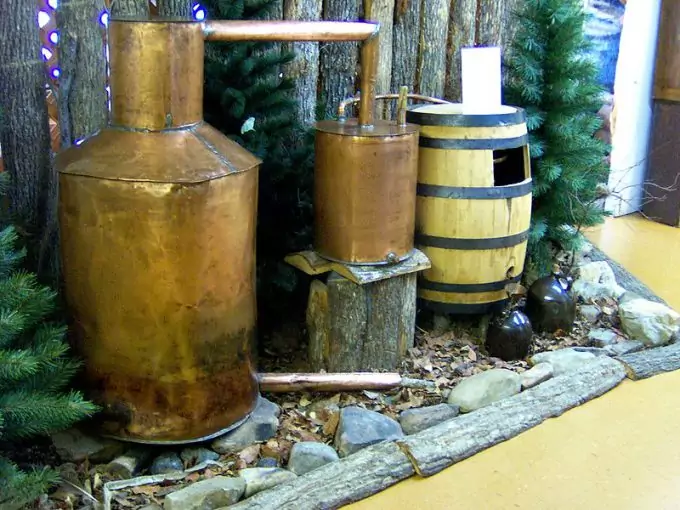Eliminating the middle man and becoming more self-sufficient is a goal we would all like to achieve. We see many people returning to the idea of subsistence farming and off-grid living.
So, what about fueling your car with an alternative energy source? How about learning how to make methanol yourself so that you never need to worry about fuel again?
Some people might call it a crazy concept, but survivalists know how important it is to be prepared for the unknown, and having a fuel source can prove very valuable!
Table of contents
What is Methanol?
Methanol is used as an alternative fuel in a few other countries. It can be combined with gasoline or utilized on its own.
It was first produced through wood distillation, which earned it the name “wood alcohol.” Today, there are several ways to produce methanol; some more complex than others.

Once you learn how to make methanol fuel, you should build up your supply and replenish your stock as needed. Some methods of methanol production include the use of carbon dioxide and renewable energy sources, making them considered a form of carbon recycling by some experts.
Advantages of Methanol Fuel
There are several benefits to using this alternative fuel. Understanding these benefits may encourage more people to consider this type of fuel.
- Hydrogen – Methanol is a form of fuel in itself, but it can also be used to produce hydrogen. This hydrogen can then be used for fuel cells.
- Higher Octane – Methanol has higher octane content than ethanol and gasoline, which is why this fuel is used for racing.
- Pressure – Methanol helps relieve the pressure on oil companies and the demand for oil-based fuel sources.
- Environmental Benefits – There are environmental and health benefits since this fuel is gentler on our ecosystem.
- Refueling – You would not have to change the way you fuel your vehicle since it can be pumped just as you would regular gasoline.
- Flash Point – Methanol is not as volatile as gasoline because of its high flash point. This means that it burns at a lower temperature and at a slower rate.
- Water-Soluble – Methanol is water-soluble which means that water will dilute the fuel so it causes less harm to the environment.
Disadvantages of Methanol Fuel
While the advantages are significant, it is also important to understand the disadvantages.
- Corrosive – Due to the corrosive nature of methane, it’s important that all equipment and storage tanks are corrosion resistant. If not, you might have spills or leaks. Stainless steel tanks are usually your best bet, along with special, corrosion-resistant hoses and tubes.
- Fueling Stations – Current fuel stations do not make it possible for methanol to be offered as an option. Tanks would need to be modified as well as hoses and various parts of the refueling system.
- Fuel Efficiency – Compared to gasoline, methanol only offers half as much energy which means that refueling will need to occur more frequently.
- Expense – Gasoline is less expensive to use.
- Volatility – Blending methanol with gasoline makes it more volatile.
- Medical Concerns – Direct contact with skin, inhalation, or digestion can result in various medical concerns.
Uses for Methanol
Apart from fueling vehicles, there are several interesting uses for methanol. Wastewater Denitrification – Methanol is added to water streams to help remove nitrogen. This is significant because, at this point, wastewater is being treated with ammonia. As a result, ammonia interacts with wastewater, which results in high nitrate levels.

Ammonia-treated wastewater can never be released back into the environment because of the devastating effects of these nitrates, but methanol can help solve this problem.
Electricity Generation – This is another possible use for methanol. Several companies are working on methanol-powered turbines as an alternative energy source.
Biodiesel Production – Methanol is also used in the process of biodiesel production. Its role is to break down the various oils.
Make Methanol Fuel at Home
Many people buy methanol, while others prefer to make it themselves. Making it yourself means you don’t need to worry about running out of fuel as long as you have raw materials on hand, along with the proper equipment.
What Supplies Will You Need?
- The first thing you will need is a Still that is enclosed and can withstand high temperatures. Given the corrosive nature of methanol, experts recommend stainless steel. Anything even slightly inferior could result in spillage and other damage.
- You will also need a fuel source. Most people choose wood, but some like to add leftover vegetable scraps to the mix. If you have a compost heap in your garden, you might want to use the scraps for fertilizer or fuel.

- You will also need a catchment container to hold the methanol.
Safety First
Safety is very important. Never rush the process, and don’t take unnecessary risks.
Always wear the appropriate clothing and protective wear. Methanol can be dangerous when inhaled, and it can also affect your eyes and skin, so make sure that you invest in durable protective wear.
Prepare the Wood
The smaller the wood, the easier it is to extract the methanol. This is because of the way the heating process works. Many people use wood shavings, so make sure the wood is as small as possible.
Heating
Once you place the wood in the Still, secure the lid and make sure a tube leads from the Still to the holding container. You must use the right kind of tubing because of the high level of corrosion. The hose may also need to be replaced from time to time, so it’s essential to check and test the hose before each use.
Vaporization
Heat the still with an open flame. The wood inside will heat up as a result, but it won’t burn as if you were lighting a fire. The Still is essentially inhibiting the combustion process from extracting the methanol. If you burn the wood, it will ruin the process.
Condensation
The methanol will rise in a gas form, which is warmer than the air around it. Just like hot air will form condensation on a window during the winter, the gas from the wood will rise to the cooler air at the top of the Still and the condensation process will begin. The liquid methanol will drip down a pipe or tube into the receiving container until the process is complete.
Storage
It’s important to understand that, like any fuel, there are storage guidelines for methanol. It’s important you consult with your local Fire Marshall and check building codes before storing methanol.
The amount you are permitted to store is subject to strict regulations. Below are some of these requirements.
- Sound ventilation systems
- Explosion-proof electricity
- Spill containment
- Fire protection
- Unique storage cabinets.

It’s essential that any other flammable, corrosive, or hazardous substances are kept far away from your supply of methanol. Depending on how you store your methanol, it can “keep” for a reasonably long time.
Check your stock regularly for any potential problems or leaks. The sooner you notice any issues, the better your chances of preventing significant damage.
Remember that methanol attracts and absorbs water, which is why you need to keep it tightly sealed when stored. Once you open the container, you will need to use its contents as soon as possible since the seal has been broken and it has been exposed to the humidity in the air.
In Case of Emergency
Due to fire risk, it’s essential you keep fire extinguishing equipment on hand. Methanol burns with a non-luminous flame, making it tough to see in well-lit areas.
If you use water to extinguish a methanol fire, you’ll need about four times as much as you need for a standard fire. The safest retardant is alcohol-resistant foam (AR-AFFF).
Additional Risk Factors
If you are planning on making your own fuel, you should follow the correct safety procedures.
- Fire Risk – Although it’s not as flammable as gasoline, methanol still poses a fire risk.
- Fumes – Ensure the room in which you’re working is well-ventilated since inhalation of the fumes can have serious side effects.
- Partner – If possible, don’t work alone. Have somebody with you or, at least, have somebody check in on you every few minutes.

- Skin Contact – Contact with the skin can cause a severe reaction. Make sure that you wear the proper protective clothing and avoid contact with your mouth, nose, and eyes.
- Repairs – Should you notice that your still or catchment container is damaged in any way, hold off on repairs. Transfer any remaining methanol into another suitable container before working on the damaged one.
- Welding – While some professionals will weld damaged containers filled with methanol, others understand that this is incredibly risky and should be avoided. Welding stainless steel will require specific welding equipment. Therefore, it might be better to buy a new one still.
- Storage – Always store your tanks in a cool, dry place and never in the sun.
- Dates – Mark each barrel with a date to know which ones are the oldest and need to be used first.
- Vehicle Refueling – If you plan to use your stock as a fuel additive in your car, you should consult with your mechanic since methanol is more corrosive than other fuel types.
Final Thoughts on Methanol
You never know when our current fuel resources will run out, and as soon as fuel starts to run low, you can expect people to panic. It’s these moments when your fuel supply will become valuable.
That said, it’s always important to use your store and replenish it. Don’t build up a collection and let it go unused. Once you use a few tanks, get ready to replace them with more so that you never run out. It is important to rotate your fuel.









Being self-reliant fuel wise is an appealing thought, but I would like to know more about safety during the process. What protective gear specifically is required?
Always wear splash-proof chemical goggles or a face shield whenever there’s a risk of splashing liquid into your eyes.
I heard methanol can make you blind. Is that a possibility when you drink it or can it cause blindness during the process of making too? What are its advantages to ethanol home made fuel?
It should be safe not unless you ingest it
A major advantage of methanol is that methane, its raw material form, can be mined. Both ethanol and methanol have a lot less energy per gram than other fuels. It would be much better to use the methanol you make from biodiesel, which also has good energy density.
This article was written to help you prepare methanol, the easy way. Methanol is cheap to make compared to other alternative fuels. And most importantly, you can make methanol from a diversity of carbon-based feedstocks.